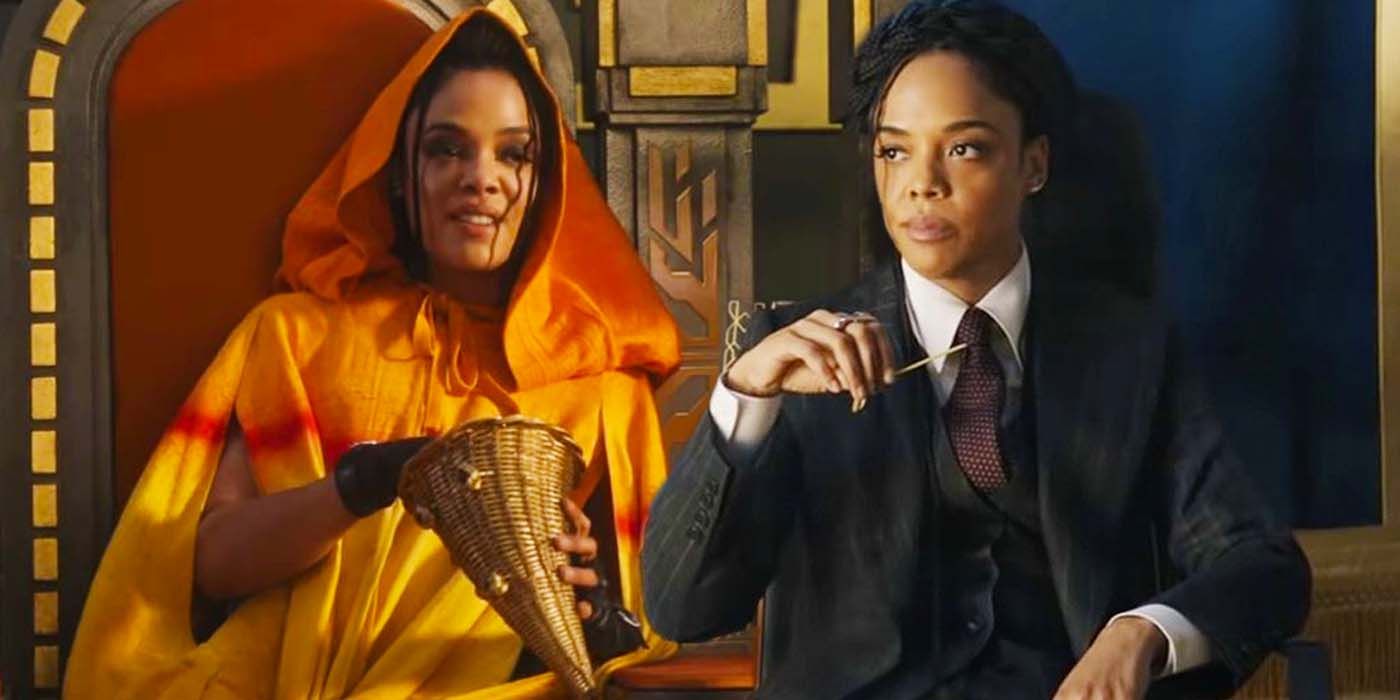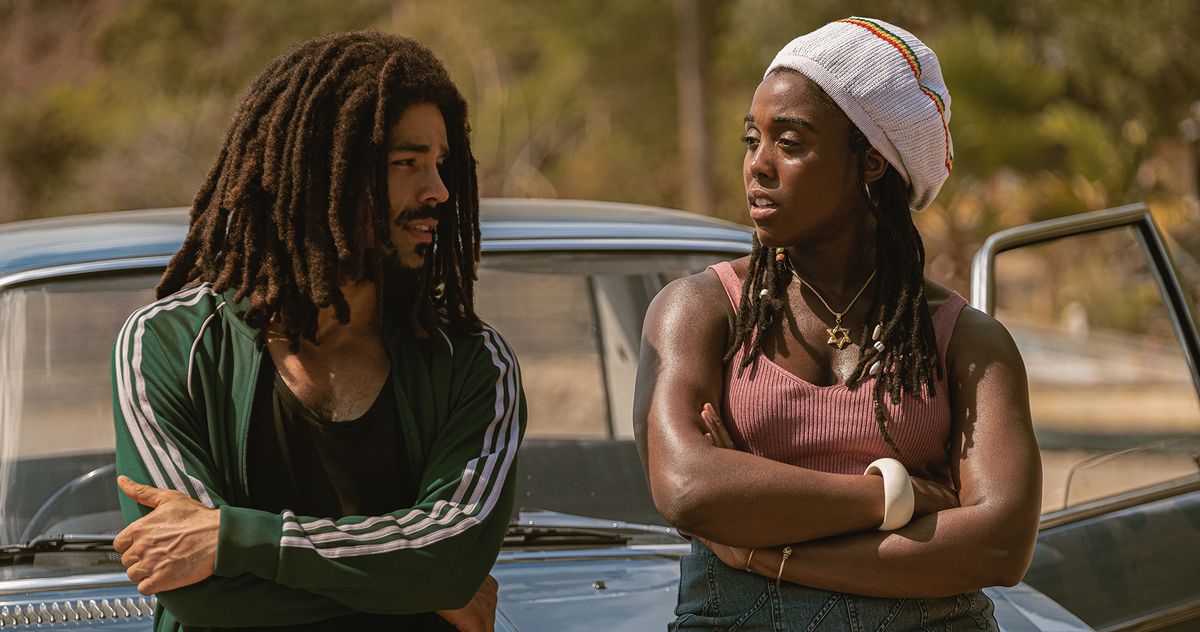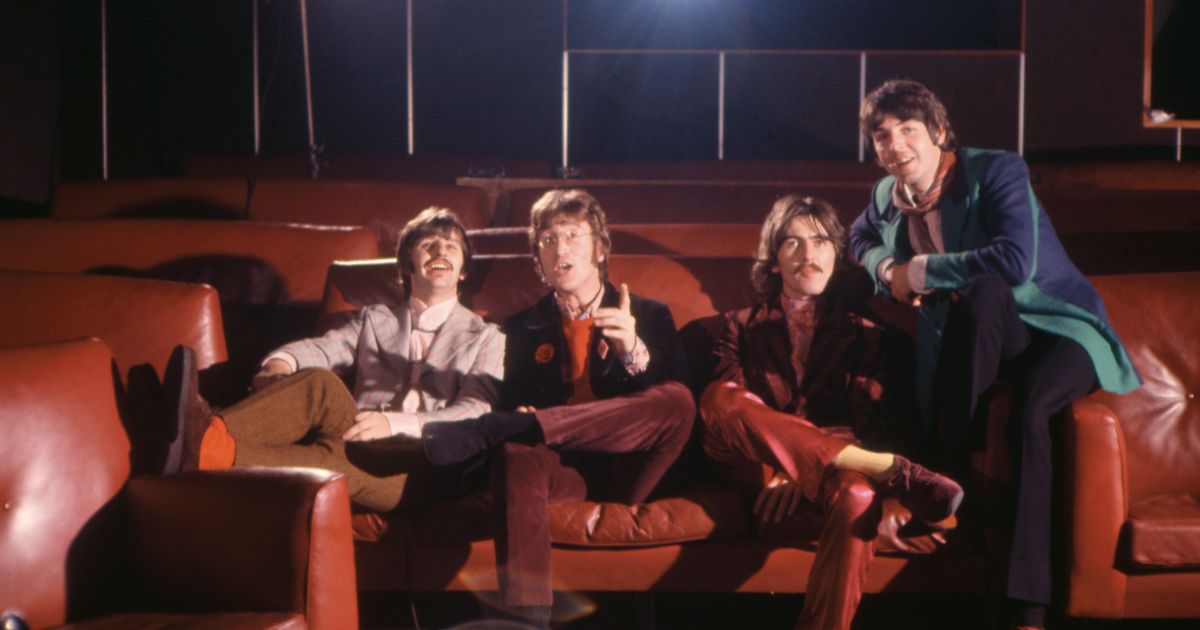
Did Thor: Love & Thunder Break Its Valkyrie LGBTQ+ Promise?
Warning: Contains spoilers for Thor: Love and Thunder
Early in production Thor: Love and Thunder promised to provide better LGBTQ+ representation for the MCU, but saying whether that promise was delivered on is more complex than it may appear. Since the MCU first began with Iron Man in 2008, it has rarely focused on romantic storylines. However, that is often not what representation is about and in the early days of the MCU the cast of characters were notably white, cisgender male, heterosexual figures. While changes have been made since then it is a developing area for the Marvel Cinematic Universe with Kevin Feige promising more LGBTQ+ characters back in 2018, which has begun to be fulfilled with movies like Eternals.
A particular focus for the MCU’s LGBTQ+ has been on Tessa Thompson’s portrayal of the Asgardian hero Valkyrie, who is canonically bisexual in the comics. Introduced in Thor: Ragnarok, Valkyrie appeared in Avengers: Infinity War and Avengers: Endgame with her last story appearance seeing Thor make her king of Asgard when he left to travel with the Guardians of the Galaxy. When asked about the future of her character at San Diego Comic-Con in 2019, Tessa Thompson said “First of all, as king, as new king [of Asgard], she needs to find her queen. So that will be the first order of business. She has some ideas. I’ll keep you posted,” seemingly promising an explicitly queer romantic storyline as a priority for the Valkyrie.
Of course, Tessa Thompson does not get to write the movies, so whether that would come to fruition or not was always marked with a question mark. While Taika Waititi, who directed and co-wrote Thor: Love and Thunder, seems eager to portray LGBTQ+ relationships, as he did in Our Flag Means Death, even Waititi is limited by higher powers in Marvel and Disney. It has been revealed that Thor: Ragnarok originally included a scene that would have made Valkyrie’s bisexual identity more explicit, but it was cut from release to improve the flow of the film. So with another chance at the character, was the MCU able to keep their promise to provide an explicitly LGBTQ+ Valkyrie?
How Love & Thunder Honored Its Valkyrie Promise

It is important to note that Valkyrie does not have a romantic plotline in Thor: Love and Thunder, let alone a full search for a queen as Tessa Thompson had previously telegraphed for the character. This could be chalked up to the fact that Valkyrie is a secondary character in the Thor: Love and Thunder story and adding a full romantic storyline for her would have made the film unwieldy and risked providing poor representation. While the lack of this narrative is disappointing, there are several ways that the fourth Thor movie does deliver on making Valkyrie explicitly LGBTQ+.
Talking about her appearances in Thor: Ragnarok, Tessa Thompson has stated that in the flashback that shows the death of the Valkyries, Thompson played her role imagining that the Valkyrie dying in front of her had been her romantic partner. Thor: Love and Thunder made this backstory for Valkyrie’s Thor: Ragnarok scene canon within the wider MCU with a conversation between Valkyrie and Korg. When Korg asks what is bothering her, he provides a long suggestion as to why she might be avoiding romantic entanglements which serve to state Thompson’s analysis of the Ragnarok scene and Valkyrie confirms that Korg is pretty much right.
There are multiple other small nods to Valkyrie’s LGBTQ+ sexuality in the MCU through Thor: Love and Thunder. As Thor, Mighty Thor, Korg, and Valkyrie depart from Omnipotence City, Valkyrie takes a notable moment to pause and kiss the hand of one of the women that had been standing beside Zeus as they share admiring looks at each other. Valkyrie assures Thor that they are both on the same “team” “team Jane,” alluding to old euphemisms around playing for teams as representing sexuality. Finally, just visible above Valkyrie’s head behind the bar on their boat, a set of rainbow neon lights can be seen while she and Korg are talking about her past love life.
Why Love & Thunder Failed Valkyrie’s LGBTQ+ Story

While Thor: Love and Thunder makes Valkyrie’s LGBTQ+ story more explicit, there are some problematic elements to the way that it is presented outside of not providing the full romantic search for a queen that was suggested. While the story about Valkyrie’s past romance is included in MCU canon now, it comes from another character and not from her own mouth. It might have been uncharacteristic for Valkyrie to be so open about her past, but flashbacks or other narrative devices could have given Tessa Thompson’s character more agency in the reveal. With it coming from an external source and simply being confirmed by Valkyrie, it leaves the story in a realm of vagueness where it could be too easily altered at a later date.
There is another major issue with the Thor: Love and Thunder LGBTQ+ representation that goes beyond simply not delivering on the story that had been promised. Valkyrie’s queerer on-screen moments all seem to be carefully separated from the story and other on-screen events. Valkyrie’s kiss on the hand at Omnipotence City, her conversation with Korg, and her quips about Jane could all be easily edited out of the movie for more conservative audiences without any change to the larger arcs of Thor: Love and Thunder. This is also true for the other LGBTQ+ representation that was included in the movie but not directly tied to Valkyrie.
How Thor: Love & Thunder Sets Up Better LGBTQ+ Rep In The MCU

Alongside Thor: Love and Thunder’s LGBTQ+ representation surrounding Valkyrie, the movie revealed the sexuality of some other characters and has set up some additional queer characters and relationships for future releases. Most notable among these was Korg, voiced by director Taika Waititi, who revealed that in the MCU the Kronans are an all-male species and therefore he discusses his same-sex relationships. This is then extended in the Thor: Love and Thunder ending scenes to show that Korg has a romantic relationship with the mustachioed Dwayne and they have a child together. This representation is a mixed bag as there is some question over whether a single-gendered species counts as LGBTQ+ representation and the scenes are, like Valkyrie’s, easily cut. However, it is represented as a queer relationship and Korg discusses having two dads, which is important in its own way.
The final two worthy mentions in Thor: Love and Thunders ending scenes are potential setups for future releases. Sif (Jaimie Alexander) ends the movie in New Asgard, training the young Asgardians. This places her alongside King Valkyrie and could easily set up a relationship between the two characters, which the actresses have both voiced an interest in seeing fulfilled. In the final Thor: Love and Thunder post-credits scene, Hercules (Brett Goldstein) is revealed to be entering the MCU. In Marvel comics, Hercules works with the Guardians of the Galaxy for a while and during this time starts a relationship with Noh-Varr, AKA Marvel Boy. Ultimately, Thor: Love and Thunder did not exactly deliver on the romantic narrative that was promised for Tessa Thompson’s Valkyrie, but it does represent another small step in the right direction for Disney’s MCU LGBTQ+ representation.










































![iFi's GO Bar Kensei Dongle DAC Supports K2HD Technology With Some Samurai Swagger [Updated] iFi's GO Bar Kensei Dongle DAC Supports K2HD Technology With Some Samurai Swagger [Updated]](https://i0.wp.com/cdn.ecoustics.com/db0/wblob/17BA35E873D594/33FF/45A11/QTXOLJR4xDKSNMMk2WlTgjaIlvSgcYpeU1xJzUwIoYs/ifi-go-bar-kensei.jpg?w=768&ssl=1)






















